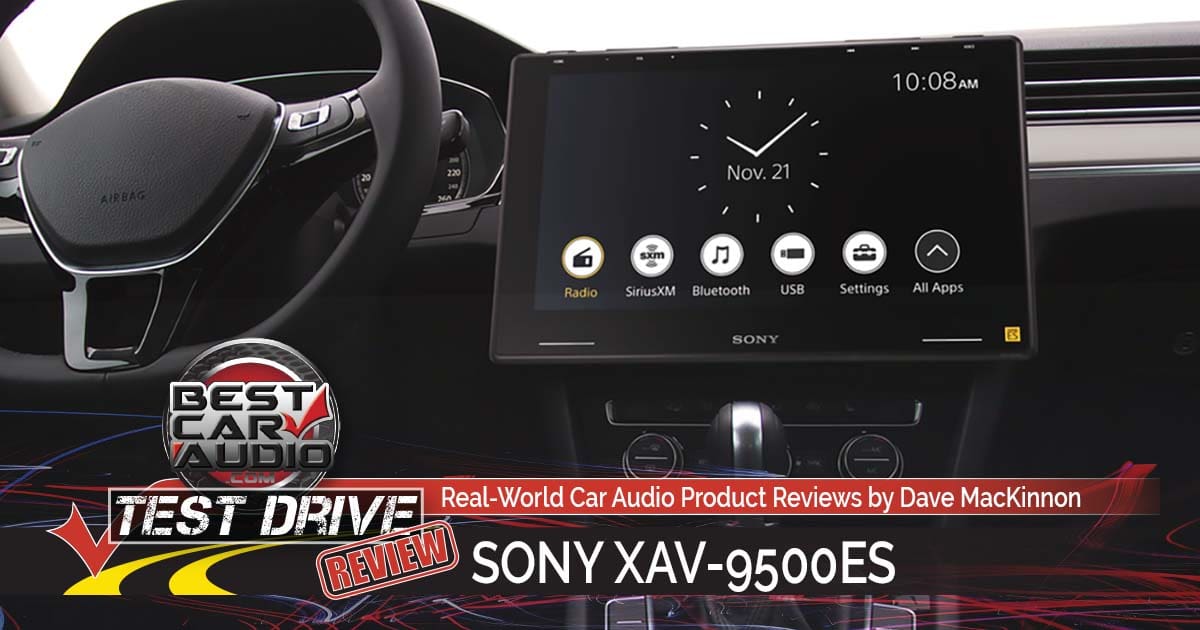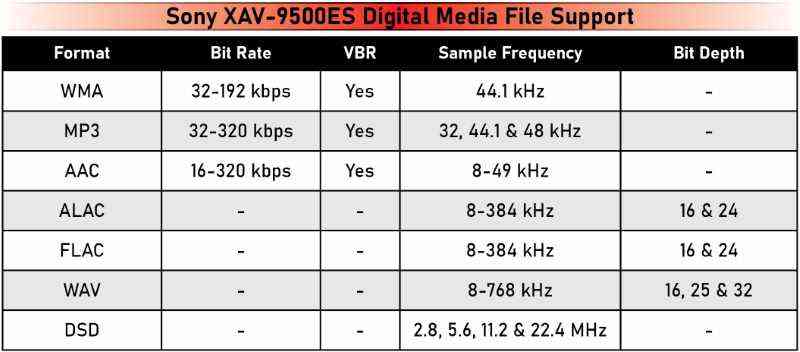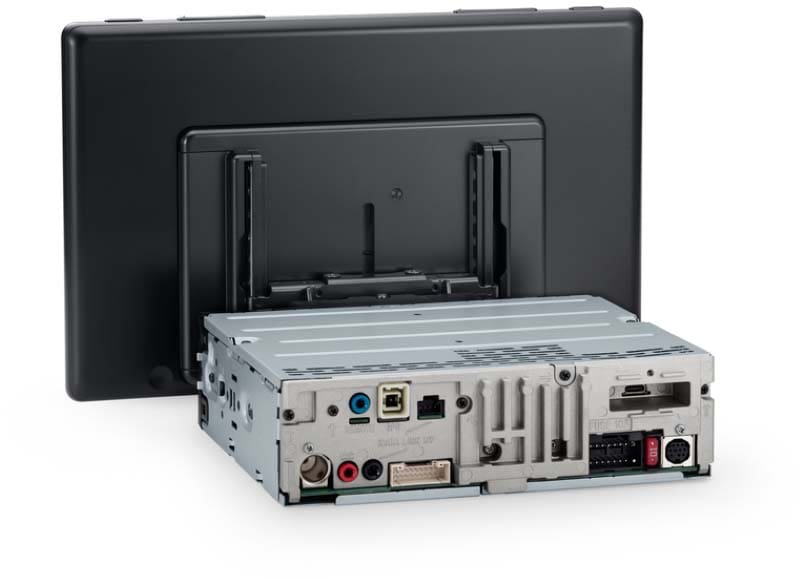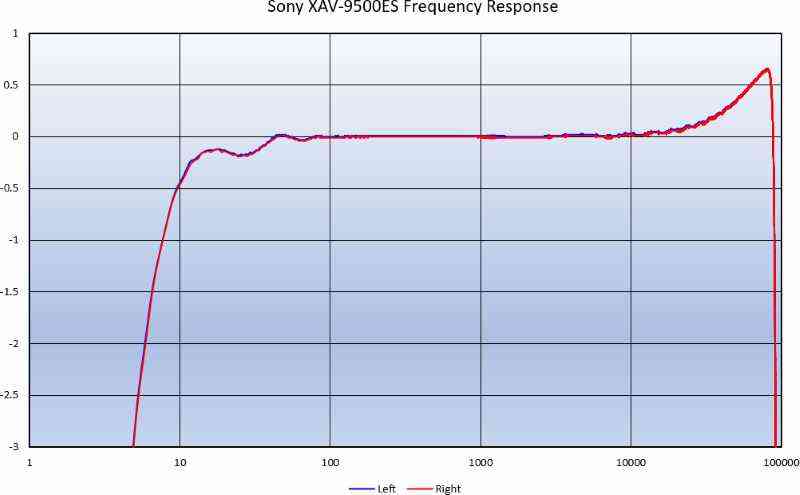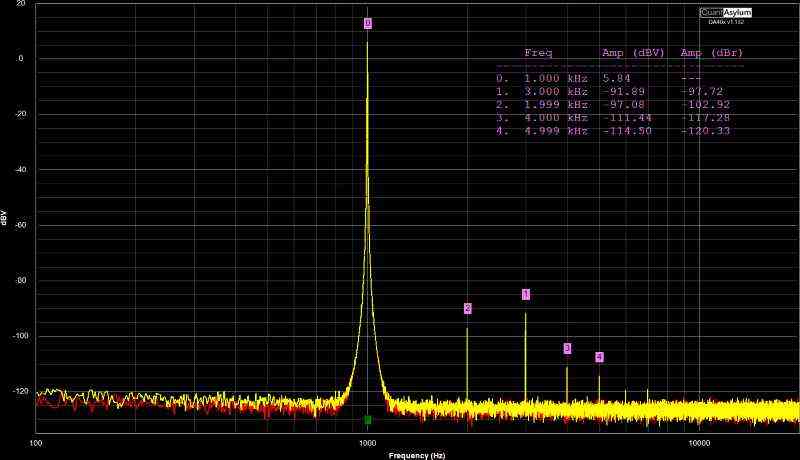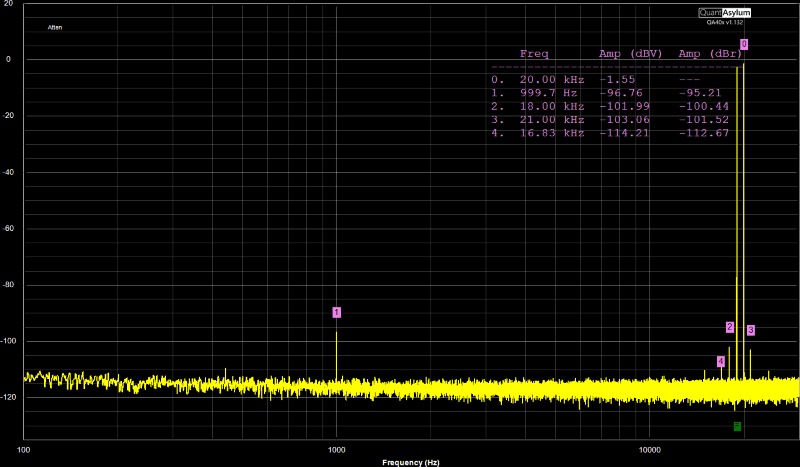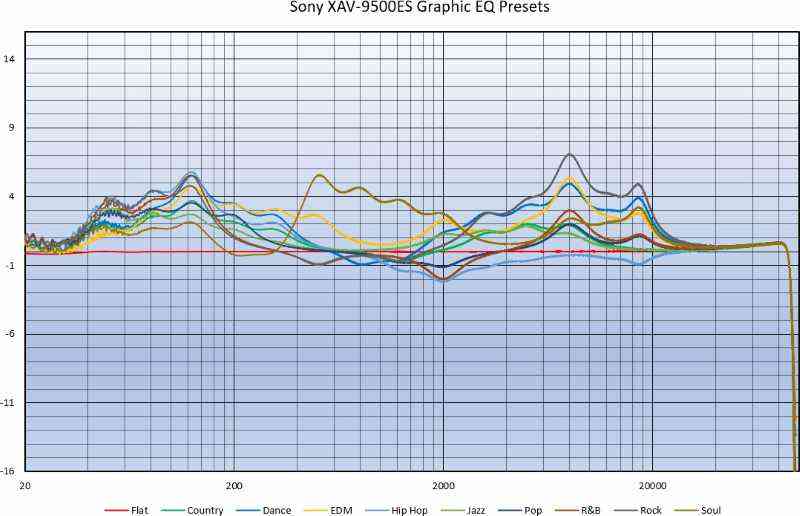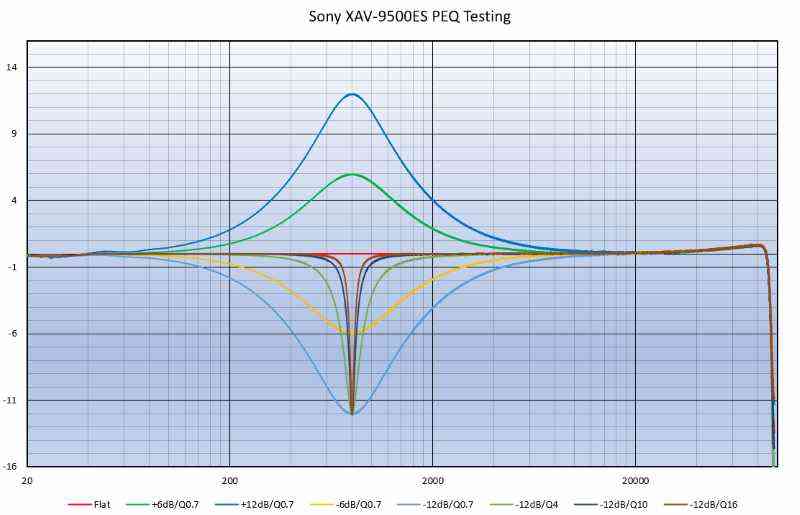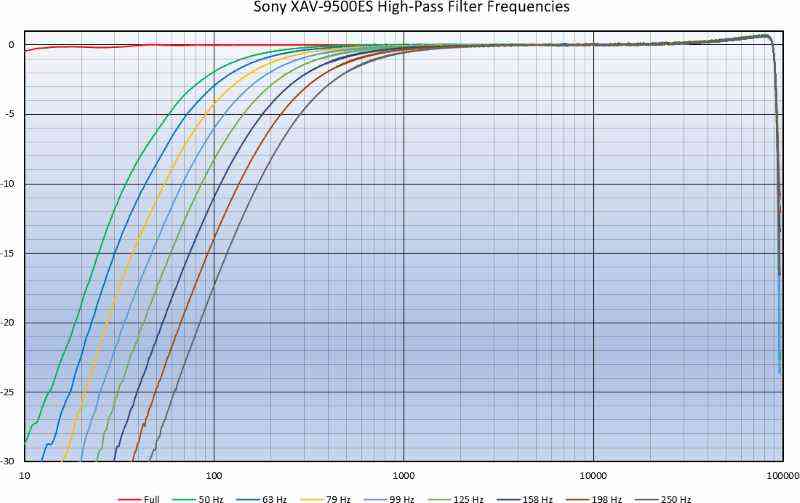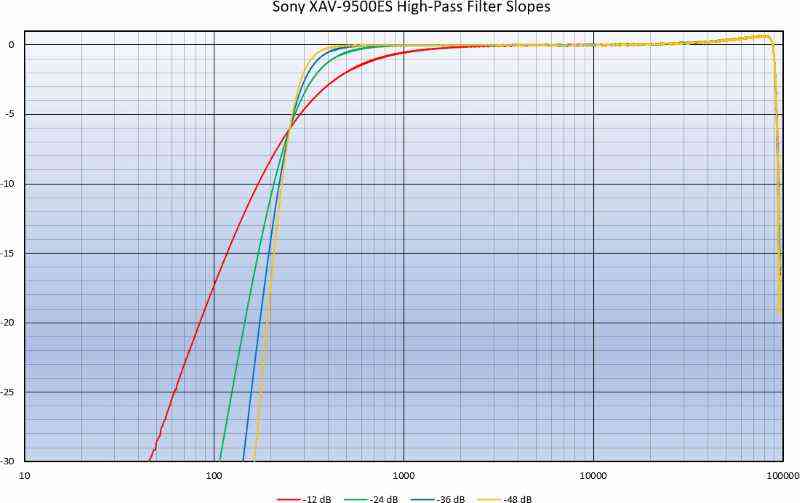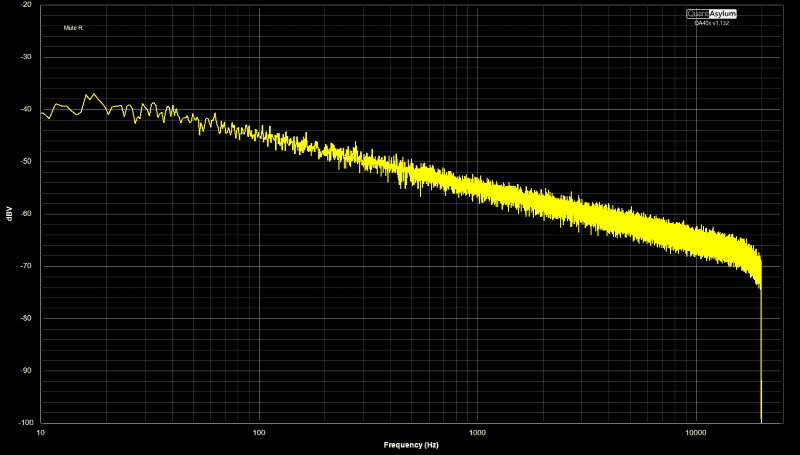If you’ve been into high-end car audio for as long as I have, then you have fond memories of source car audio source units like the famed CDX-C90 from the late ’90s. While the RSX-GS9 media receiver is an amazing option, consumers have been craving a multimedia solution with CarPlay and Android Auto smartphone integration. Thankfully, the Sony product development team heard their call and responded with an amazing solution. Without further delay, I am honored to introduce the Sony XAV-9500ES Mobile ES Hi-Res receiver.
Sony XAV-9500ES Design and Features
The first thing you need to know about the XAV-9500ES is that it’s as serious about sound quality as it is about features. At the heart of the unit is an Analog Devices SigmaDSP digital audio processor that handles crossovers, equalization and signal delay features – just like you’d find in high-end car audio DSP.
From there, the digital audio signals are sent to an ESS Technology Sabre ES9080Q digital-to-analog converter (DAC) that can handle 32-bit data and sampling frequencies as high as 768 kHz or DSD512. What’s even more remarkable is that this DAC debuted in December 2020. Turning premium components into a premium product in just a few months is no small feat. I tip my hat to the Sony engineers for that.
In summary, this radio uses the latest technology and components to reproduce audio as clearly as possible.
The XAV-9500ES is based on an anti-resonant, dual-layer single-DIN chassis. The dual-layer design separates the signal processing and power supply boards to maximize electrical noise isolation. The circuit boards only take up a third of the chassis, leaving room for a heavy-gauge metal frame that supports the floating 10.1-inch display. The TFT Active Matrix display panel has a resolution of 1280 by 720 pixels, a contrast ratio of 1000:1 and a brightness spec of 425 candelas per square meter. The touchscreen uses a capacitive interface that doesn’t interfere with the image quality. Sony has included anti-glare texturing on the unit’s face and used an optically clear adhesive to bond the front glass to the LCD screen. This attachment method helps eliminate unwanted reflection in the assembly for a clearer image.
When it comes to styling, Sony’s car audio multimedia receivers aren’t the flashiest on a display board in a store, but they look right at home in the dash of your car or truck. I firmly believe that your car audio upgrades should look like something that might have been installed on the vehicle assembly line. The XAV-9500ES continues with this theme with subtle lighting, a monochromatic color scheme and, best of all, an easy-to-use and intuitive interface.
Six low-profile mechanical buttons on the top of the display make volume, track selection, mode adjustments and voice command initialization easy. Two user-assignable function button areas are indicated by white horizontal lines below the display image area. They can be programmed for mute, display off, source change, home, next, previous, volume up or volume down functions in the Custom Key menu.
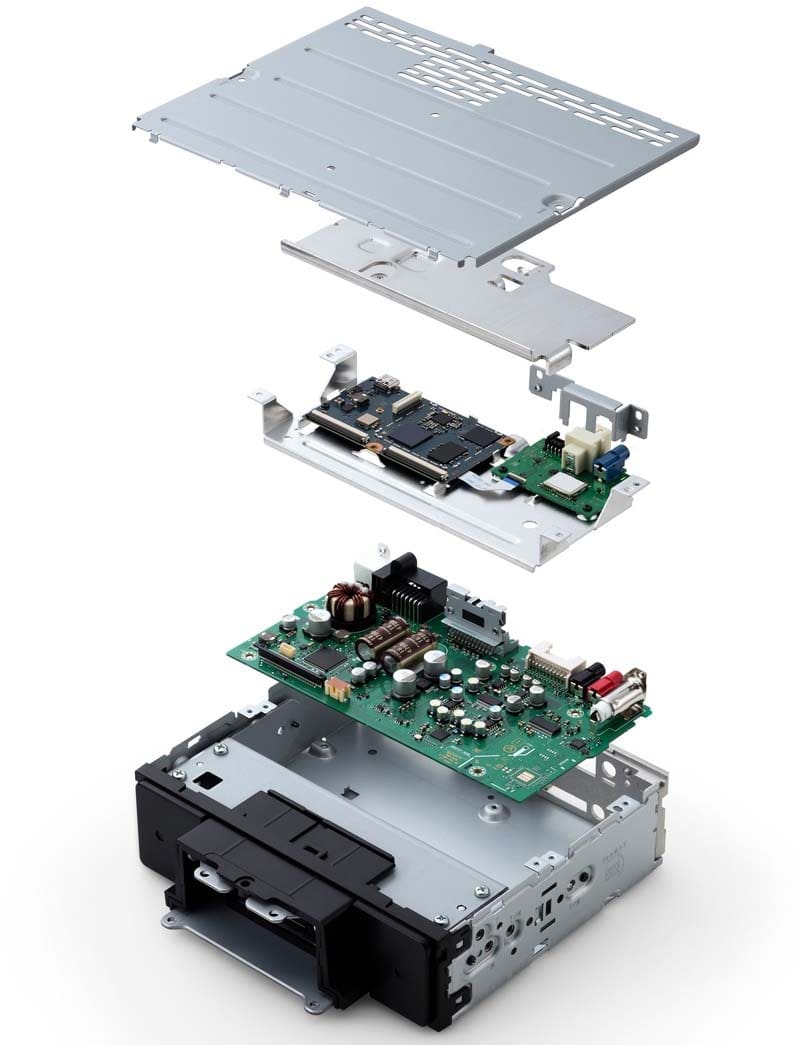
Aside from rock-solid stability, the display mounting system offers a significant amount of adjustability. It includes protrusion distance options, the option to have the screen extend upward or downward from the chassis, and the ability to fine-tune the display position to the left or right by an inch. Your installer can also tilt the screen forward or backward by 10 degrees. In short, there’s enough adjustability to make this radio look great in your dash.

The radio has a dedicated dimmer input wire that will darken the screen when the vehicle’s headlights are on. When dimmed, an adjustment menu determines just how bright or dark the screen is. The numbering initially seems counterintuitive as a higher value results in more dimming. With that said, if you think of the number as the dimming level rather than the brightness level, it all makes sense. The screen image can also be turned off using the Display Off feature. If you drive on poorly lit roads at night, eliminating light sources in the vehicle can dramatically improve your ability to see farther down the road – assuming your lighting wiring is functioning properly.
The XAV-9500ES includes both the Apple CarPlay and Android Auto smartphone integration solutions. These smartphone connectivity options are available wirelessly. The pairing is quick and easy, so even someone who isn’t a computer specialist will be up and running in less than a minute. Sony includes a wired microphone (with a 12-foot cable) that your installer can mount centrally in the vehicle, so voice commands and outgoing Bluetooth audio calls will be crystal clear.
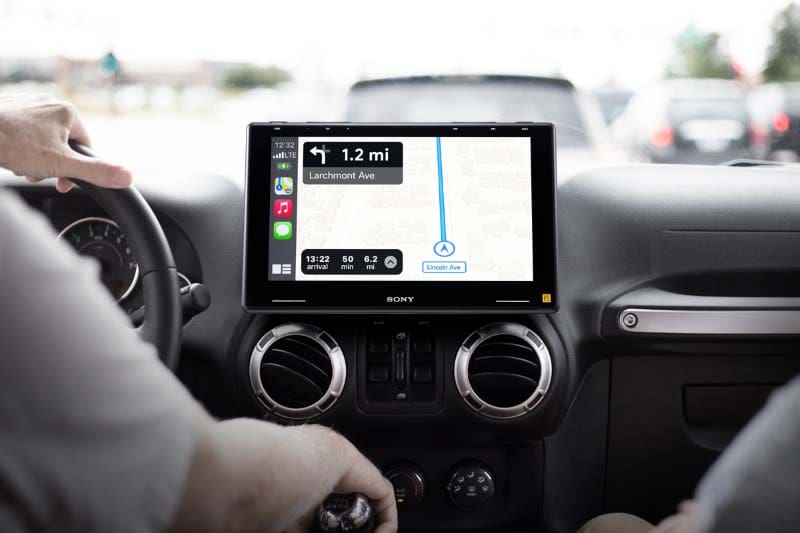
The radio has an AM/FM tuner with Radio Data System display. In addition, you can search by pre-defined program or use the Best Tuning Memory function that loads the strongest radio stations in the area into the presets.
On the rear of the chassis, a deeply recessed USB-C jack works with the provided 59-inch USB extension cable. You can connect a USB memory stick to the radio to play MP3, WMA, ACC, FLAC, ALAC, WAV or DSD audio files. If you’re a high-resolution music enthusiast, it’s worth noting that the deck supports 394 kHz, 24-bit playback of ALAC and FLAC files, 768 kHz, 32-bit WAV files and 22.4 MHz DSD files. While all are converted to 192 kHz internally, the XAV-9500ES can play almost anything. In addition, the USB-C port is rated to provide 3 amps of current to charge practically any smartphone or tablet.
The radio can be upgraded with an optional SiriusXM satellite radio tuner module to provide access to deliver genre-specific programming anywhere in the U.S. and across most of Canada and Mexico. Finally, Bluetooth 5.0 is included and features the LDAC codec, which allows for three times the bandwidth of conventional Bluetooth audio. Sony states that the LDAC supports 96 kHz, 32-bit audio transfer to improve sound quality dramatically.
From a connectivity standpoint, the XAV-9500ES features a Class A/B four-channel 20Wpc amplifier and front, rear and sub preamp outputs rated for 5 volts. Three camera inputs include a dedicated backup camera connection and two additional inputs that could be used for forward-facing or cargo cameras. The selection of the second and third cameras is made manually.
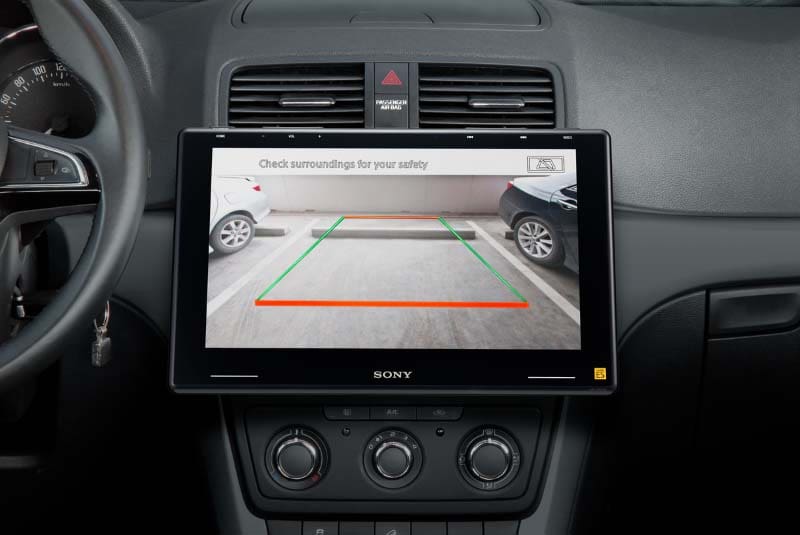
The XAV-9500ES is compatible with all popular steering wheel audio control interfaces. This radio supports the iDatalink Maestro RR and RR2 integration modules. The Maestro system communicates with the vehicle data bus to display information like vehicle speed, engine rpm, fuel level and tire pressure. Climate controls are also available on the radio touchscreen when a Maestro is in place on some applications. If you have a supported vehicle, Maestro is a must-have! I’ll tell you more about this advanced connectivity when I integrate the radio into our 2019 Hyundai Santa Fe.
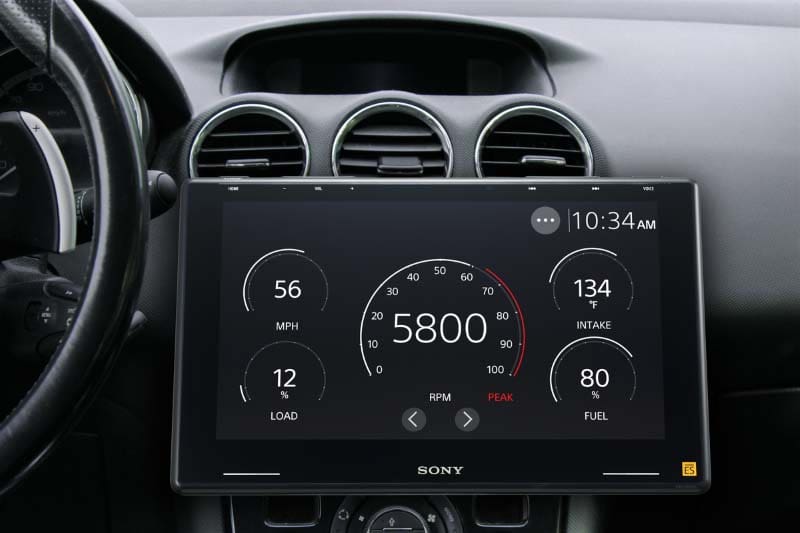
Signal Processing and System Configuration Features
The XAV-9500ES is loaded with signal processing options to let your installer fine-tune your audio system. The radio includes adjustable high-pass crossovers on the front and rear powered and preamp channels and an adjustable low-pass filter on the subwoofer RCA outputs. The crossovers are not only adjustable for frequency but also for slope. The subwoofer output can be in mono or stereo, and this selection determines if there are one or two EQ bands and level controls for the subwoofer(s). There is also a polarity inversion selection option on the sub output. My measurements later in the review show the adjustability options.
The radio includes a global 14-band graphic equalizer with several response curve presets to let users personalize their sound experience. There are two presets labeled “Custom” that users can use to make their own response curves. What’s revolutionary about this radio is that each output channel also has a dedicated eight-band parametric equalizer. This adjustability allows your installer to fine-tune the frequency response of each speaker individually. A signal delay menu provides 1 cm steps so your installer can set up the system to deliver an impressively accurate soundstage. If you want your audio system to immerse you in the listening experience, the XAV-9500ES has the tools and configuration options to get that done.
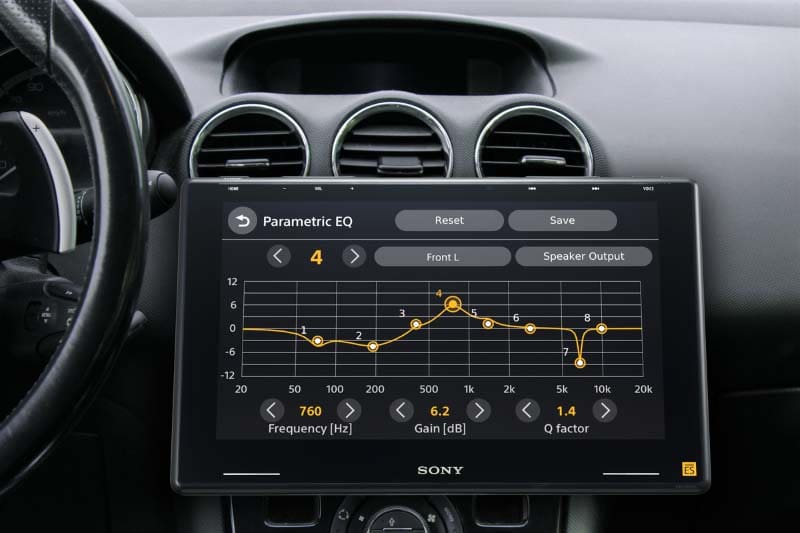
Listening to The Sony XAV-9500ES
I started evaluating this new Sony Mobile ES radio by connecting it to the reference system in my lab. I copied the crossover settings from my reference radio to the Sony, then connected the amplifiers for my bookshelf speakers and subwoofers. The radio does work with the RM-X400 infrared remote control, but it’s an option and not included with the radio.
I started off the listening session with Daft Punk’s “Get Lucky” from the album Random Access Memories. This recording has a sampling rate of 88.1 kHz and is captured in 24-bit resolution. I was immediately struck by the impact and dynamics of the recording. The lead vocal was focused tightly in the center of the soundstage. I cued up “Give Life Back to Music” next. Listening to this track with the XAV-9500ES was the first time I’d heard the processing on the vocals so clear and discernable. Rather than simply being an “effect,” you could hear the modulation in each voice. Pretty neat! By the way, the radio displays the sampling rate and bit depth of whatever track is being played.
Dave Brubeck’s “Bossa Nova U.S.A.” from his quartet’s album of the same name was next. Listening to this fantastic jazz track made it clear that enjoying music on a truly high-end sound system can be done in two ways. From a technical perspective, you can listen to the placement and focus of each instrument, its tonal balance and dynamics. You can evaluate the width and depth of the soundstage and the clarity of the overall presentation. A genuinely high-end system has the unique ability to unmask subtleties in a recording so it can be presented as individual parts. Lesser source units that blur everything together can’t do this. Alternatively, you can tap your foot and enjoy the talent of each performer and how they interact in perfect time with each other. You can mix the instruments in your mind and see the band playing together. Some describe this as the difference between an audiophile and a music lover. The transparency of the XAV-9500ES gives the listener the option of either or both.
I played “Amazing Grace” by Judy Collins next. Wow! Just wow! The ambiance and reverberations of her voice in the recording venue are gigantic. Judy sings with no accompaniment for the first 90 seconds of the track. She’s placed in the center of the soundstage, but the room ambiance fills in around her to create a massive wall of sound. Her voice was very realistic, as was the sense of room size.
Next, I played “Easy on Me” by Adele from her new album 30. From the first time I heard this song on the radio, I’d been critical of its engineering. Now, in a high-end system, it’s even worse. I’ve listened to Holly Cole, Judy Collins, Norah Jones and Alison Krauss in the last hour. Each put a smile on my face. Adele’s voice doesn’t sound natural on this track. It’s compressed and unrealistic. Likewise, the drums are also over-processed. They go “blup” rather than “thud.” The piano, however, sounds pretty good. So, we can credit the Sony receiver for helping to reveal what’s happening in a recording, even if it’s not a pleasant experience.
My last test track was “Your Latest Trick” from Brothers in Arms by Dire Straits. Playing this immediately after Adele takes even more away from her song. The Dire Straits track sounds SO real by comparison. The saxophone is brassy and clear. The cymbals on the left of the soundstage have a realistic ring and high-frequency detail. You can hear each tap of a drumstick like the kit is in the room with you. Mark Knopfler’s voice is silky and smooth, with no unwanted emphasis anywhere. I could listen to the whole album many times over.
Sony XAV-9500ES Test Bench Measurements
I set the XAV-9500ES up in my lab and started basic measurements. The radio can produce 5.31 volts RMS with a 1 kHz, 0 dB test tone in terms of preamp output capabilities. The output impedance is nice and low at 224.9 ohms. The RCA outputs didn’t clip with the volume at full with a 0 dB test tone, and all the equalizers were set flat. I used a positive impulse test track to confirm that the RCA outputs maintain positive signal polarity. The internal amplifier produced 8.11 volts into a 4-ohm load at 2% THD. This measurement works out to a typical-for-a-radio 16.44 watts per channel with all channels driven. With a 0 dB test tone, the speaker outputs clipped at volume level 44 out of 50, showing some intentional (and normal) gain overlap.
I always evaluate how the subwoofer level control feature on a radio works, since they can often be counterintuitive. In the case of this Sony, someone put some significant effort into the design. With the subwoofer level at 0, the output voltage on the RCA preamps is the same as the front and rear channels. If you turn the sub up to +10, you get 10 dBV more signal. In most scenarios, this would cause the sub outputs to clip at any level where the radio volume is above -10 dBFS. The Sony software engineers took this into account and have included a limiter on the sub output. So, when you crank the volume, the front and rear channels will catch up with the sub above -10 dBFS.
Testing source units for frequency response and distortion is tricky. With an amp or processor, the audio analyzer can feed a signal into the unit and then measure its effect on that signal. With no analog input, I used the open-loop measurement feature of my QuantAsylum QA402 audio analyzer. I used an exponential frequency chirp recorded at 32 bits and a sampling ratio of 192 kHz for the frequency response testing. The Sony produced a -3 dB frequency of 4.7 Hz on the bottom and 91.54 kHz on the top. The little wiggle on the bottom end below 80 Hz is inaudible. The slight 0.65 dB boost at 80 kHz is something I saw when testing the Sony RSX-GS9 receiver a few years ago. It’s high enough that you won’t perceive this as brightness or anything like that. Most crucially, in terms of supporting high-res audio formats to 192 kHz as claimed, the 96 kHz high-frequency roll-off highlights Sony’s dedication to supporting wide-bandwidth audio recordings and playback.
Next, I created several test tone tracks to evaluate the noise and distortion characteristics of the source unit. First, I tested harmonic distortion on the preamp outputs by creating a 1 kHz, 0 dB test track in 192-24 format and analyzing the output with my QA402. The graph below shows a second-order harmonic at 97.72 dB below the stimulus and the third-order at -102.92 dB. The calculated THD+N is an extremely impressive 0.00322%. The XAV-9500ES has an equally impressive measured signal-to-noise ratio of -91.75 dB. What do these numbers mean? The RCA outputs are very clean and there won’t be background hiss, unless it’s in your music or added by an amplifier or processor.
I also created a CCIF Intermodulation Distortion test track to see how the 9500ES would fare. This test involves playing simultaneous 19 and 20 kHz tones. Most audio products (especially amplifiers) add significant unwanted information at 1 kHz (which is the difference between 19 and 20 kHz) and some harmonics at 1 kHz spacing on either side of the stimulus tones. With the measurement showing a 1 kHz product at a level of -95.21 dB (0.0017%) and the side-bands of 18 kHz at -100.44 dB and 21 kHz at -101.52 dB, the Sony tests exceptionally well.
Up next, I characterized the built-in equalizer curves for the graphic equalizer. The graph below shows the nine curves and the reference flat response graph. In this scale, you can see just how flat (red trace) the frequency response of the 9500ES is.
As I mentioned, each radio channel (six in total) has a dedicated parametric equalizer with eight bands of adjustment. Boost or cut can be applied in 0.1 dB steps from -12 to +12 dB. Each band is adjustable in frequency from 20 Hz to 20 kHz. Below 100 Hz, the frequency adjustments are in 1 Hz steps. From 100 Hz to 1,000 Hz, the steps are 10 Hz, and from 1 kHz and up, they are in 1,000-Hz steps. With that said, if you need to pick a frequency in between that spacing, you can move the dot representing the EQ band you want to adjust with your finger on the screen. Each EQ band has an adjustable Q-factor, and the range is from 0.7 (very wide) to 16 (extremely narrow).
The graph below shows the frequency response of the parametric EQ with +12, +6, 0, -6 and -12 dB adjustments at 800 Hz. I then adjusted the -12 dB cut Q from 0.7 to 4, 10 and 16 to characterize the bandwidth adjustability. Again, the measurements are dead-nuts perfect in terms of amplitude.
Next, I checked out the adjustments of the built-in crossovers. The front and rear channels have adjustable high-pass filters that can be set to 50, 63, 79, 99, 125, 158, 198 or 250 Hz, and the subwoofer channel has the same low-pass filter options. The filter attenuation can be adjusted to -12, -24, -36 or -48 dB per octave.
Up last, I wanted to measure the frequency response of the Bluetooth streaming system. I have an iPhone 11 Pro and used the Onkyo HF Player app to play a 192 kHz, 32-bit pink noise track to the deck. You can see the frequency response is flat (for pink noise) up to the typical cut-off of 22 kHz. A dedicated media player like the Sony NW-WM1A with support for the LDAC codec at 990 kbps might offer more bandwidth. I’ve seen evidence that output above 22 kHz is possible with that codec.
In testing non-audio functions, I measured the power output capabilities of the USB port at an impressive 5.3 volts with 3 amps of current. Unfortunately, the radio got mad at me and displayed a USB over-current message as I increased the draw beyond 3.5 amps – sorry, radio.
The rear-view camera input switches quickly. It’s worth noting that the on-screen guidelines for the rear-view camera input are adjustable. Likewise, the image for each of the three camera inputs can be toggled between whatever the camera produces and a horizontally mirrored image. So, if you don’t have a true-image camera for the front of your truck or SUV, this feature can make a standard reverse-image backup camera work ideally.
While scrolling through the menus, I noted that you can upload your own background image file. The file should be in JPEG format that’s 6 megabytes in size or less and have a maximum resolution of 2048 by 1080 pixels. Of course, it makes the most sense to have the file prepared in a native 1280 by 720 pixels.
Lastly, though perhaps it should have been first, the phone pairing process was straightforward. As mentioned, I have an iPhone 11 Pro. When I clicked on XAV-9500ES in the Bluetooth menu, the radio displayed a message asking if I wanted to confirm the connection; I agreed to a similar message on the phone, and I was done. Tapping on the connection screen on the radio let me switch the connection from Bluetooth to CarPlay mode. The transition to 5 GHz Wi-Fi was handled invisibly. The takeaway: You don’t have to worry about pairing Wi-Fi; the radio does it for you, at least with an iPhone.
In terms of measurements, bench performance and features, the Sony XAV-9500ES is, as Austin Powers would say, “Dead sexy!”
Poking at the Display
I’ve heard many people ask about the design of these floating face radios and whether or not the display was solid. I can tell you with the utmost confidence that the mechanism securing the screen to the radio is as rigid as a conventional double-DIN radio. The screen itself has a substantial feel, as though the entire assembly is made of aluminum. Actually, given its heft, it just might be. Nothing moves as you press the buttons on top or while selecting options on the capacitive-touch display. The design is confidence-inspiring in every sense. If you detect any movement, I’d investigate the integration with the vehicle.
It’s also worth noting that the radio responds instantly to every command. It’s like typing on the screen of a smartphone. A few menus have animated transitions, so they take a few tenths of a second to open, but that’s a planned event. If you ever wonder about the difference between a premium name-brand radio and some of the B- and C-level brands, response time to input is a big part.
Sony XAV-9500ES Test Drive Review Conclusion
Sony didn’t pull any punches when designing the XAV-9500ES. The hardware is state-of-the-art, and the microcontroller overseeing the system is lightning fast. As a result, the radio boots quickly and responds instantly to commands.
The sound quality of this unit is world-class. It’s nice to have finally put my hands on a modern multimedia receiver that can be the heart of a proper audiophile-grade mobile entertainment system. The support for high-resolution audio files punctuates this design philosophy. A good source unit should reproduce a recording without adding distortion. The Sony XAV-9500ES does that in spades. In a car, however, there’s more to recreating music than delivering a clean signal to a set of speakers in an optimized listening room. That’s where the signal processing capabilities of the unit stand out. The ability for your installer to calibrate the output of each channel for the signal delay and frequency response is crucial to creating an accurate, focused and realistic soundstage
With its massive high-definition display, modern smartphone integration features, pleasing cosmetics, iDatalink Maestro support, the ability to play almost any digital audio file exceptionally accurately, plus the three-year warranty, the Sony XAV-9500ES is a great choice for anyone truly serious about enjoying music in their vehicle.
